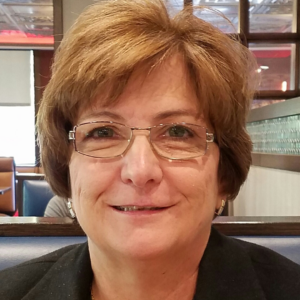Top Ways to Ensure a Smooth Transition for New Residents

Marcy Baskin, eldercare consultant and managing director, Senior Care Authority
A new resident’s transition into your senior care facility is a key time. A smooth transition can reduce resident stress, make a positive first impression, and help a resident to immediately feel a part of the community.
But these transition periods are tricky, and ensuring that they go smoothly can be a challenge. If you want to improve your residents’ experience from the very beginning, it may be time to reexamine how you’re handling transitions.
Why Transitions are Challenging
Marcy Baskin, eldercare consultant and managing director at Senior Care Authority, explains that there are many challenges to transitions, and those challenges can show up differently depending on the circumstances that surround the resident’s move. “The experience depends on physical, emotional, and cognitive abilities of the person who is moving,” says Baskin.
“If a person is moving because, for example, they just lost their spouse, the impact of leaving their home of many years is compounded by their grief and sadness,” Baskin explains. “Care needs that make living alone unsustainable have psychological impact and may leave the older adult feeling vulnerable and dependent.”
Baskin notes that the transition can feel foreign and institutional to residents. “Even something as simple as learning their way around the new community or deciding where to sit in the dining room (not unlike being the new kid in the high school cafeteria) can be unsettling,” she says.
New residents may also experience challenges around:
- Smaller living quarters requiring them to leave possessions behind
- Eating in a group dining setting or being very particular about food
- Not knowing anyone, especially for residents who are naturally introverted
- Feeling out of control, such as when someone comes by to dispense medications, rather than being in charge of one’s own medications
- Anxiety surrounding change
- Learning new routines
- Pet issues
Senior care facilities can help to make the transition easier in multiple ways.
How to Prepare for a Smooth Transition
Thorough preparation can play a significant role in making transitions smoother for new residents, and much of this preparation starts while the resident is still at home. Baskin notes that efficient packing and preparation for the move is important, and residents and their families also need to spend time thinking about what to do with possessions that residents can’t take with them.
Other preparation steps, like setting up the cable and phone ahead of time, and making sure that mail is forwarded, can help residents to settle in.
Baskin also recommends that it’s often beneficial to work with a professional advisor. That advisor can ensure that the new environment “checks all the important boxes for the person who is moving.” Baskin adds that most of these work at no cost to the person moving, as communities pay them a fee when they introduce a new resident professionals.
Best Practices in Creating a Smooth Transition
Certain best practices can help senior care facilities to ensure that residents experience as smooth a transition as possible. Baskin notes that some of her favorite senior care communities share a common feature: “They have a welcoming committee, a buddy system for new residents, a resident ambassador, or some other system in place for integrating a new resident,” she says.
“Having something like this in place can greatly reduce the anxiety of living in this new and unfamiliar environment. Feeling welcome and accepted play a huge role in the comfort level of new residents.”
Baskin also encourages communities to do some research into a resident before they move in. Find out what they enjoy, what their life was like in the decades before their move, and who their closest friends and family members are.
It’s also important to ensure that new residents are reminded of the community’s daily scheduled activities. “If you notice someone is not attending any of the offerings, have your activity director make it a point to knock on their door and personally invite them,” suggests Baskin.
Ensuring that staff are aware of the new resident is also essential. “One pitfall I have seen is that because staff are very busy, they may not stop to greet or do a real check in,” says Baskin. “Thirty seconds of “Good morning Mrs. Smith – you look lovely today, how are things going? Are you enjoying the food?” can go a long way to making someone feel less invisible and welcomed.”
Baskin also encourages communities to hold daily check-ins with caregivers, med techs, activity directors, dining room staff, and other personnel. These check-ins should take place during a resident’s first week or two within the community. The check-ins can help the community to troubleshoot for isolation, loneliness, boredom, or any other dissatisfaction. She also urges communities to track the new resident’s satisfaction on all levels. “Food, in particular, can be a comfort if enjoyable and a problem if it isn’t.”
The initial transition into a senior care community can be challenging for residents, but communities can take many steps to help make that transition easier. With preparation and extra effort to make the resident feel welcome, communities can help new residents to connect and engage with staff, other residents, and the activities available.

Paige Cerulli is a contributing writer to i Advance Senior Care.
Related Articles
Topics: Activities , Resident Care











